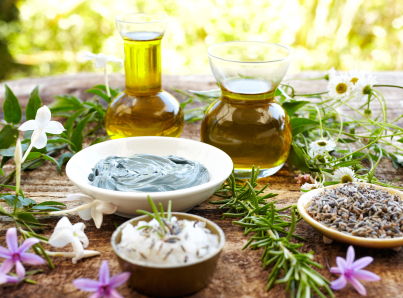Credit to: http://tipnut.com/baking-mixes-seasonings/
Looking for a few ways to save money on your next grocery bill? Making your own pantry supplies is one way to shave those dollars!

You can whip up batches of homemade cake mix, Bisquick, Hamburger Helper, dry soups plus a whole lot more…even your own spice and seasoning blends.
Not only are these ideal for stocking up the pantry, many are also suitable for packaging as gifts in a jar (see this page [1] for more ideas). They also come in handy as a substitution for out-of-stock items when you’re in a pinch.
Here are over 100 goodies you can check out, you’ll find them separated into two groups for easier browsing. I’ve included a few recipes from the Baking Substitutes [2]and Herbs & Spices: Storage Tips Guide [3] pages.
Lots here folks, enjoy!
PS: This is just the start! As with all collections here on Tipnut, I’ll be adding more goodies as I come across them. You may want to bookmark this page for future reference, it’s sure to come in handy .
.


You can whip up batches of homemade cake mix, Bisquick, Hamburger Helper, dry soups plus a whole lot more…even your own spice and seasoning blends.
Not only are these ideal for stocking up the pantry, many are also suitable for packaging as gifts in a jar (see this page [1] for more ideas). They also come in handy as a substitution for out-of-stock items when you’re in a pinch.
Here are over 100 goodies you can check out, you’ll find them separated into two groups for easier browsing. I’ve included a few recipes from the Baking Substitutes [2]and Herbs & Spices: Storage Tips Guide [3] pages.
Lots here folks, enjoy!
PS: This is just the start! As with all collections here on Tipnut, I’ll be adding more goodies as I come across them. You may want to bookmark this page for future reference, it’s sure to come in handy
| Apple Cider: theblessedhearth.blogspot.ca [4] Bisquick – Biscuits – Baking Mix: parents.com [5] goinghometoroost.com [6] heart-hands-home.blogspot.ca [7] grandmaskitchen.com [8] Bread: bhg.com [9] (Cheddar/Herb) criscocanada.com [10] bettycrocker.com [11] (machine) Breadcrumbs (Seasoned): marthastewart.com [12] Brown Sugar: 3 cups Sugar (white) plus 1/4 cup Molasses, combine with your hands or a fork then store in an airtight container. Brownies: countrymommacooks.com [13] littlehouseliving.com [14] pbs.org [15] Cake Mix: Chocolate: alighterjourney.com [16] Chocolate: afewshortcuts.com [17] Yellow: chickensintheroad.com [18] Yellow: momables.com [19] White: iambaker.net [20] White: countrymommacooks.com [21] Cocoa/Hot Chocolate: handletheheat.com [22] (Peppermint) myrecipes.com [23] momadvice.com [24] melskitchencafe.com [25] Confectioners’ / Icing Sugar: mynewoldschool.com [26] Cornbread: countrymommacooks.com [27] heart-hands-home.blogspot.ca [28] chickensintheroad.com [29] Flour: Gluten-Free: tasteofhome.com [30] Almond: pastrypal.com [31] Cake: Add two level tablespoons of corn starch to a one cup measuring cup, then fill with bread flour. Sift three times then use as needed. Self-Rising: In a one cup measure, place 1 1/2 tsp baking powder and 1/2 tsp salt, then fill to top with flour. Gingerbread: foodformyfamily.com [32] heart-hands-home.blogspot.ca [33] Hamburger Helper: chickensintheroad.com [34] my-extraordinary-life.blogspot.ca [35] Italian Salad Dressing: eatnourishing.com [36] | Mocha: (Iced) thricethespice.blogspot.ca [37] (Assorted) tipnut.com [38] Nesquick: sugarbananas.blogspot.ca [39] Pancake: treehugger.com [40] superhealthykids.com [41] countrymommacooks.com [42] (Blueberry) eatingwell.com [43] (Buttermilk) phemomenon.com [44] Instant Pudding: Vanilla: browneyedbaker.com [45] Vanilla: creativeprincessbrandi.com [46] Chocolate: satisfymysweettooth.com [47] Chocolate: ponderedinmyheart.typepad.com [48] Ranch Dip & Dressing: taracooks.com [49] everythingscomingupdaffodils.blogspot.ca [50] Rice-A-Roni: cheftessbakeresse.blogspot.ca [51] chickensintheroad.com [52] chefmichele.blogspot.ca [53] Shake ‘N Bake: kitchensimplicity.com [54] momskitchencooking.blogspot.ca [55] KFC Coating: chickensintheroad.com [56] Stuffing: motherearthnews.com [57] tipnut.com [58] (bottom of page) pioneervalleyma.blogspot.ca [59] Teas: Dried Fruit & Herb: wholefoodsmarket.com [60] Chai: nadinesnook.blogspot.ca [61] Chai: faithfulprovisions.com [62] Spiced: tasteofhome.com [63] Tortilla: heart-hands-home.blogspot.ca [64] tasteofhome.com [65] SoupsCream Soup Substitute:thyhandhathprovided.com [66] food.com [67] Instant Noodle: ellenskitchen.com [68] Onion: selfreliancebyjamie.blogspot.ca [69] cheftessbakeresse.blogspot.ca [70] Potato: ellenskitchen.com [68] Vegetable Noodle: ellenskitchen.com [68] |
 *Can make any amount you wish, this is just a rough guideline
*Can make any amount you wish, this is just a rough guideline








